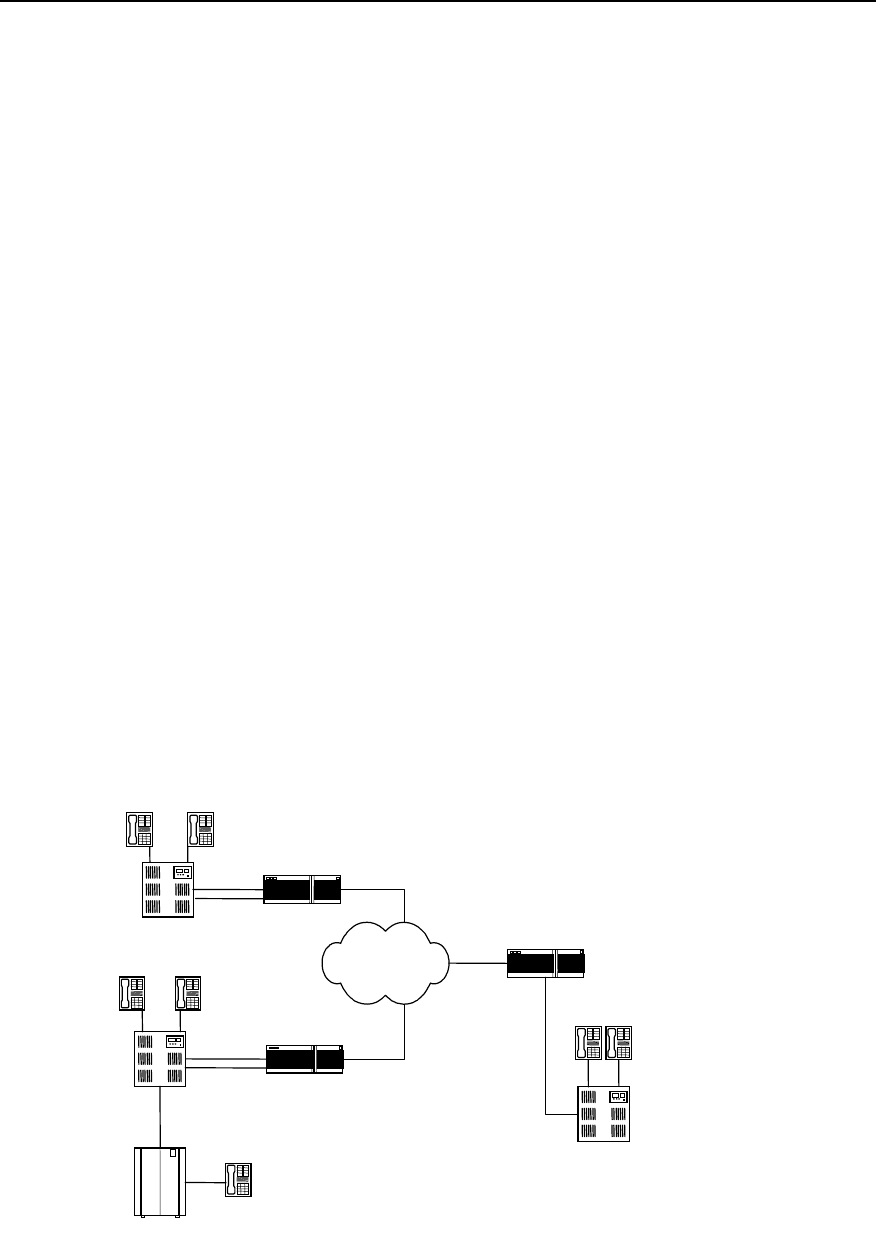
User Manual - Configuration Guide (Volume 3)
Versatile Routing Platform
Chapter 1
VoIP Configuration
1-18
1.4.2 Configuring Router FXO and E&M Trunk Ports for Interconnection
I. Networking requirements
There is a local telephone network established by PBX in Beijing, Shenzhen and
Shanghai respectively, it is required that the three networks implement interconnection
via three routers with voice function and the internal PBX subscribers can make non-
local ordinary calls via VoIP.
The routers in Beijing and shanghai can provide the FXO ports, while the router in
Shenzhen uses the E&M port.
You may select any of the following modes for the connection of any router and the
PBX:
z
The routers provide the FXS ports, the PBXs provide two wire loop trunk port
FXOs
z The routers provide the FXO ports, the PBXs provide ordinary line port FXSs
z All the routers and the PBXs provide the E&M trunk ports
The number of connection established between the PBX subscribers in Shenzhen and
Beijing are determined by the smaller one of the number of Router_Shenzhen E&M
trunk ports and Router_Beijing FXO trunk ports, so it is with Shanghai.
In the following figure, Tel.1 in Beijing is an ordinary PSTN subscriber. If not using VoIP,
when the subscribers in Shenzhen or Shanghai dial Tel.1, they need to add the area
code 010, but through the VoIP configuration, instead of dialling the area code, you can
call in local mode, which is very convenient and can also save call charge.
Provided that when the internal PBX subscribers in the three cities make external calls,
they need to dial “0” firstly.
II. Networking diagram
WAN
Router_
Shanghai
021-1001
021-1002
FXO
E&M
Port6
WAN
3.3.3.3
WAN
2.2.2.2
Router_Beijing
FXO
WAN
1.1.1.1
010-1001
010-1002
PBX
PBX
0755-2002
PBX
Tel.1
010-6543
PSTN
Port0
Port1
Port1
Port0
Beijing
Shanghai
Shenzhen
Router_Shenzhen
0755-2001
Figure VC-1-6 The routers connect with the PBXs via the E&M trunk


















